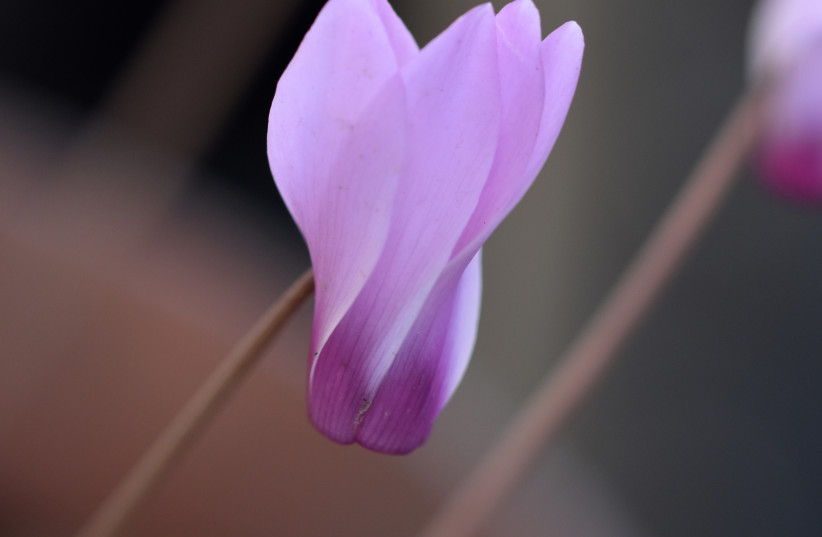Jerusalem Botanical Garden: Flowering in Israel's capital

The Jerusalem Botanical Gardens has the largest collection of plants and trees in Israel.
What is the only place in Jerusalem that is visited by 180,000 people and 45 species of birds annually, is the setting for bridal photos, recently hosted the Miss Universe candidates, and protects hundreds of endangered plants?
The Jerusalem Botanical Gardens, providing a breath of fresh air and natural beauty in the middle of the city, sits on 45 acres in the neighborhood of Nayot, on the edge of the Givat Ram campus of the Hebrew University of Jerusalem.
It is home to over 6,000 species of plants and trees from all over the world, the largest collection in Israel.
My advice to all visitors is to wear comfortable shoes, bring a camera, a bottle of water, and plan to spend from two to three hours exploring a fascinating world with surprises at every turn.
The first surprise as you enter the gardens is a display showcasing the plants of the month. Featured for January was the cyclamen, or rakefet, which was the National Flower of Israel until 2013.
A protected species, it blooms between December and February.
The gardens are arranged by geographical regions: Southern Africa, Europe, North America, Southwest and Central Asia, and the Mediterranean.
Plants and trees from hot and humid regions from the Americas and Asia, such as bananas, coffee, henna, some varieties of orchids and cacti, can be seen in the Dworsky Conservatory, located on a hill overlooking the gardens.
The conservatory is climate-controlled to simulate the temperature in those places.
A plaque with its scientific and Hebrew names, as well its place of origin or habitat, indicated in English, identify each of the plants.
Some Israeli plants are identified as “rare,” “very rare,” “native,” “protected” or “water-saving.” The garden also conducts research and has grown more than 300 endangered species.
A few months ago, the Jerusalem Botanical Gardens launched the Wildflowers Project, a campaign aimed to preserve biodiversity in Israel urging people to purchase a plant and seeds of Israeli flowers and plant them in their private garden.
Some of the 28 available for purchase are water-saving and some, like the White Henbane, are considered very rare or endangered, such as the Clary Sage. A catalog can be found on the Botanical Gardens’ website.
The Garden Explorer page of the website is a treasure trove of information where the serious researcher can find the names of more than 3,000 flowers.
The accompanying photos, taken in different months, show the rich variety of the gardens’ collection. For more information, visit https://www.botanic.co.il/en/ ■
Jerusalem Post Store
`; document.getElementById("linkPremium").innerHTML = cont; var divWithLink = document.getElementById("premium-link"); if (divWithLink !== null && divWithLink !== 'undefined') { divWithLink.style.border = "solid 1px #cb0f3e"; divWithLink.style.textAlign = "center"; divWithLink.style.marginBottom = "15px"; divWithLink.style.marginTop = "15px"; divWithLink.style.width = "100%"; divWithLink.style.backgroundColor = "#122952"; divWithLink.style.color = "#ffffff"; divWithLink.style.lineHeight = "1.5"; } } (function (v, i) { });


